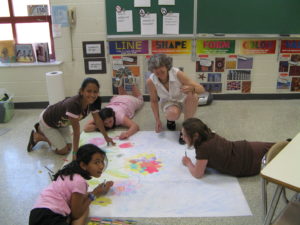Today we were with friends on a lake, the Fall colors are near peak, and my eyes kept drifting past faces and drinking in the landscape beyond. It was enchanting, winsome, just deeply beautiful. I kept taking pictures and then looking at the result that had been translated to pixels …which was just plain disappointing. There is nothing like the retinal receiving of the immediate full display: citrons and pale salmons next to dusty tans, lime yellows next to rusts and light cherry reds, sages and spruce, with lavender shadows, oh glory. Next time I just need to have my paints right there on the boat, and freshly mix what my senses are shouting. My retina does not remember well, for it has moved onto the next thing, like the car keys and the night crème, what a sorry shame.
Last week I was in Philadelphia helping my daughter move into their apartment. We made time on the last day to go over to the Philadelphia Art Museum. I had heard about their current show: “Rembrandt and the Face of Jesus.” Rembrandt is an important reference for me, though I am not a figurative painter. His deep psychological investigation into his subjects was groundbreaking; and his illustrations of the Biblical stories showed far more than just a liturgical compliance but rather a deeply personal engagement.
I grew up going to The Art Institute with my Mom. I took our daughters and son often to museums too and it is still something we like to do when we can together; so this was the carrot before our horses. But my daughter, who lives in Philly cautioned as we drove up to park, “you know Mom, this might be expensive…” Ever the can-do kid am I, “let’s just see what they say.” Well, it’s been too long since I was in that Museum! The traveling show tickets were way more than I remember. And so we thought, let’s just go in and at least look in the shop at the catalogue to see what they have gathered and make a decision from there –no way for that either: just getting past the entry desk was a pricey proposition. This was a shock to my system. We fumed, turned instinctively together and walked out, and that too was a sorry shame. In fact it was more than that, it felt like money changers in the temple! “I can’t look at Rembrandt’s effort at capturing the sublime unless I cough up so much cash?”
I know, I know, it costs to gather and ship and hang etc. But c’mon! It seems to me that there is a diminishing return here where they have priced themselves beyond a lot of people who would otherwise not only help them pay for their work at putting on this show, but would also fill the rooms and then take the images home in their spirits and into their own work. I looked later to see what the mission statement of this museum is and no luck, except for a statement about acquisitions. Is this only a money making operation then?
“Are you ok, Mom?” “I’m just sad…I really wanted to see how he tried to capture that face directly, a reproduction on a page is not the same…” and then it occurred to me…one day I will see the real thing on my retina, and I just might be standing near Rembrandt when that happens.
My retina has long since shifted thousands of times since that opportunity so close to the hanging Rembrandts. And I likely would not now be able to remember deeply the visual impression anyway, nor be able to put it to words.
But what I saw today nobody had to hang, or ship from far away places. Those leaves have been waiting there all summer for their glorious changes, gathered into a sublimely random assortment of joy. It was free. It was available for anyone who wanted to look. And it was a flash on my retina from His heart.
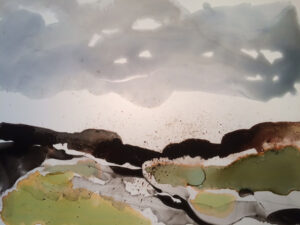
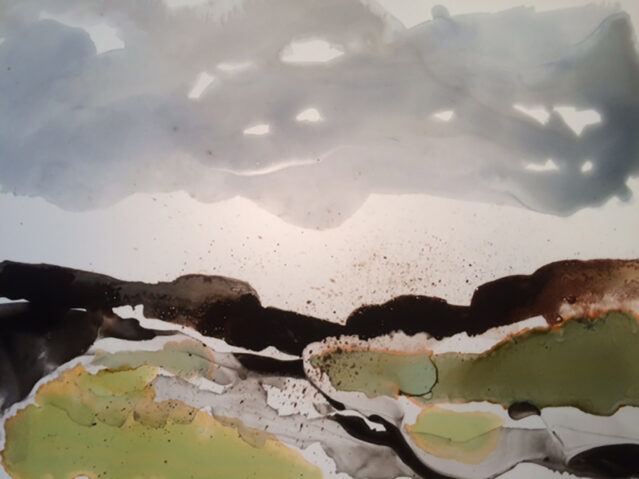
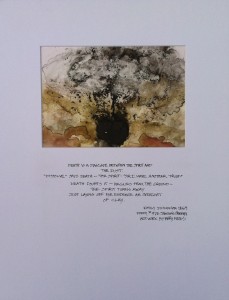
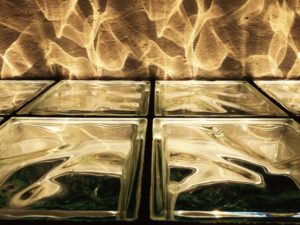 Amid the noisy machines, flashing tv screens and the running track, there is a window at my fitness center. It is a glass block section that scatters light into the space where we work. Everyone inside has an individual training plan going on. There’s sweat, determined looks, clocks, and all around the sounds of metal clanking. I was tromping along with my earbuds locked into a current-events podcast when I got stopped by this view. This was greater news.
Amid the noisy machines, flashing tv screens and the running track, there is a window at my fitness center. It is a glass block section that scatters light into the space where we work. Everyone inside has an individual training plan going on. There’s sweat, determined looks, clocks, and all around the sounds of metal clanking. I was tromping along with my earbuds locked into a current-events podcast when I got stopped by this view. This was greater news.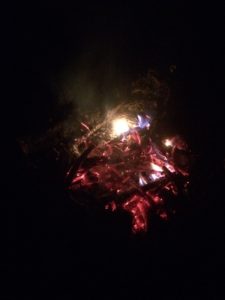 I found her sitting outside alone when I went back out to douse the campfire. Her heart language is Chinese, but here in my back yard she was using her phone to find words in English to capture what she was feeling. She showed me the little screen and a collection of words she thought perfect. Then we both were thrilled. She had just discovered one of my very favorite poems on her own. Here is Yeats’ “When You Are Old”
I found her sitting outside alone when I went back out to douse the campfire. Her heart language is Chinese, but here in my back yard she was using her phone to find words in English to capture what she was feeling. She showed me the little screen and a collection of words she thought perfect. Then we both were thrilled. She had just discovered one of my very favorite poems on her own. Here is Yeats’ “When You Are Old”
